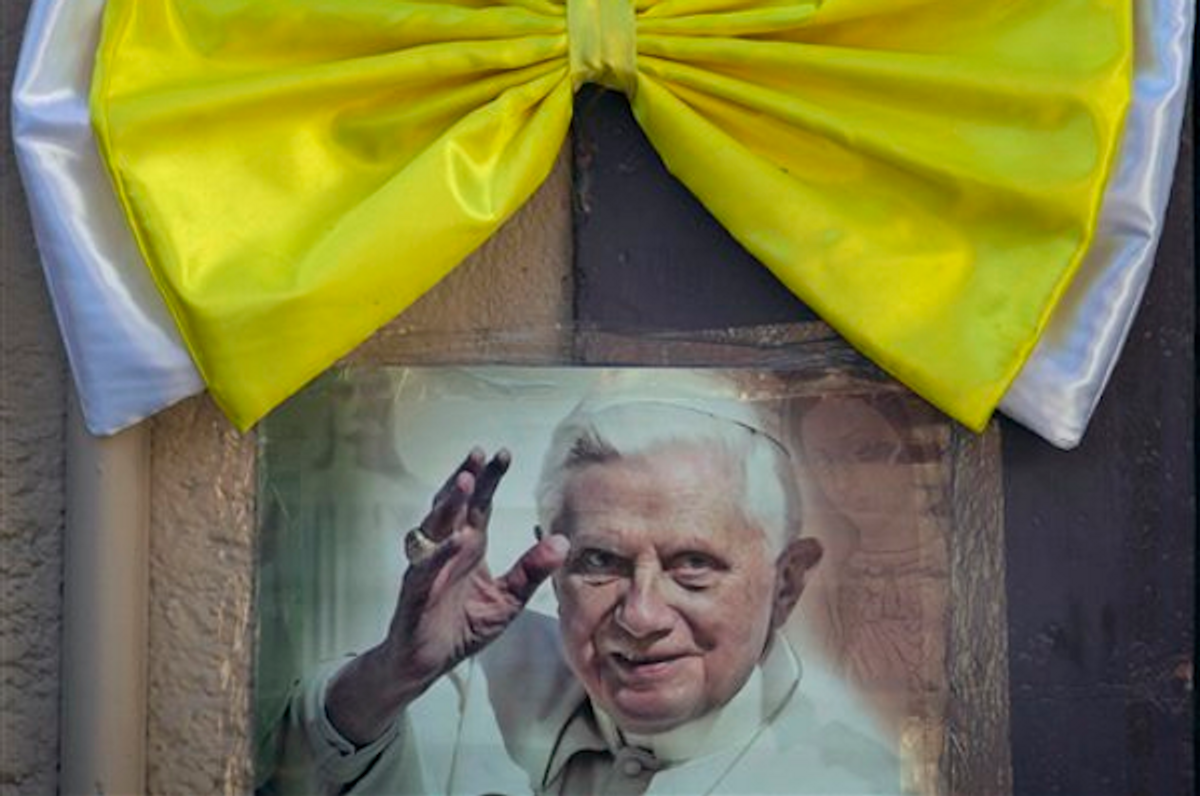Late last week, residents of Michoacán received some of the best news the dangerous Mexican state has gotten in months. Friday afternoon, the powerful drug cartel the Knights Templar (Los caballeros templarios) announced a three-day truega, or truce, on violent action. The reason? Not the pleas of terrorized residents, and certainly not the futile efforts of state police, who still remain nearly powerless against the cartels. The cause of this miracle - -if you would call it that -- was nothing short of the pope himself.
In handmade posters hung in various places around the state, the Knights Templar announced their plan to renounce violence during Pope Benedict XVI’s three-day sojourn to Mexico this weekend. The posters, which were hung near busy intersections and pedestrian bridges, announced their “welcome” to the pope and renounced any “violent action” during his visit. Translated into English, their signs read:
The Knights Templar renounces any military or violent action. We are not murderers. We welcome the pope.
So far, with the pope one day into his visit, the truce has apparently held (though the Knights Templar kept up the killings until the day of his arrival). Though brief, the renunciation of violence is an atypical move for a drug ring that is as idiosyncratic as it is brutal. Recruiting many of its members from nearby rehabilitation centers, the Knights prohibit members from using drugs, and despite their well-documented history of violence, are devoutly religious. Among its requirements is a mandatory initiation that requires potential members to perform a blood ritual and dress up in the medieval garb that inspires their name.
At the same time, the Knights Templar is regarded as one of the most notoriously brutal cartels in the country, second only to the “Zetas,” a drug ring formed in the early '90s that controls much of western Mexico. Reliance on violent tactics have helped the Knights Templar establish one of the largest amphetamine trafficking schemes in record time: The cartel was only founded last spring as an offshoot of La Familia Michoacana, another cartel.
When they first announced themselves, the Knights hung more than 40 banners, or narcomantas, across the state with a message promising security. "Our commitment is to safeguard order, avoid robberies, kidnapping, extortion, and to shield the state from rival organizations," they said.
Their first killing happened days later. Now the leading cartel in the state, the Knights have proven their dominance in meth trafficking. near the area, such as the Sinaloa Cartel and the Beltran Leyva organization. Most citizens of Michoacán refuse to talk openly about the Knights Templar. Those who do speak cautiously, saying the cartel never harmed the community or complaining about constant presence of the federal police.
The pope, for his part, will take up the issue of drug violence on Sunday. According to the New York Times, he’ll blame the violence on traffickers’ greed. Then on Monday he’ll take off for Cuba -- and for Michoacán, the drug war will resume.



Shares